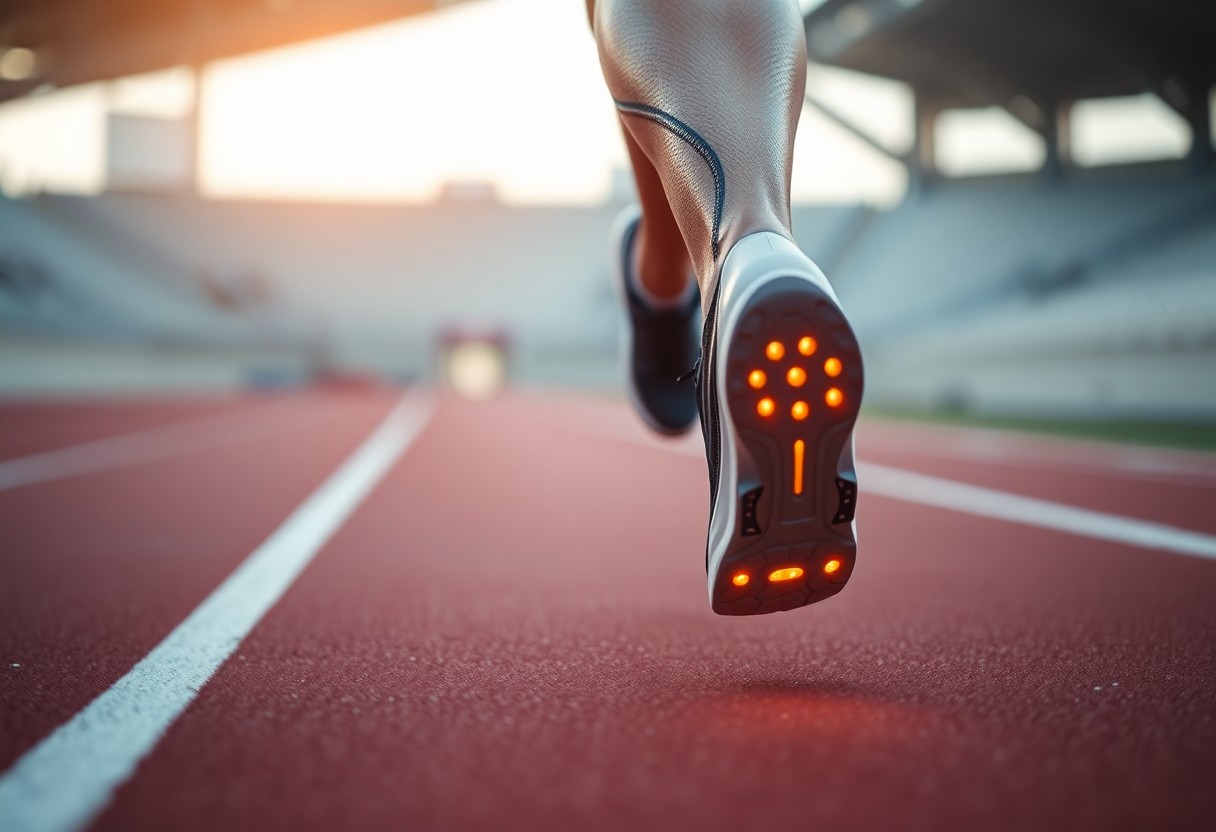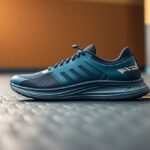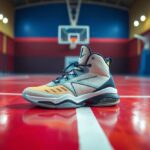
Discover the revolutionary innovations in running footwear technology that have significantly reshaped the realm of performance optimisation for endurance athletes.
The field of performance optimisation in endurance running has experienced a remarkable transformation thanks to advanced footwear technology, presenting athletes with unparalleled avenues to elevate their athletic capabilities. You will learn how state-of-the-art shoe designs can effectively diminish your metabolic expenditure whilst enhancing your running economy. By incorporating carbon fibre plates alongside innovative midsole materials, these advanced shoes facilitate extraordinary energy return mechanisms that could potentially reduce your oxygen consumption by as much as 4%. Regardless of whether you are a seasoned elite athlete or a passionate hobbyist, being informed about these biomechanical advancements can empower you to make astute choices regarding your running gear, which could in turn enhance your race timings.
 Continue reading to delve deeper into the intricate mechanics of running footwear that promise to elevate your performance:
Continue reading to delve deeper into the intricate mechanics of running footwear that promise to elevate your performance:
Unlocking the Secrets of Energy Return Mechanisms in Modern Running Shoes
Modern running shoe technology employs intricate biomechanical principles to optimise energy transfer during movement. Cutting-edge design elements collaborate harmoniously to reduce metabolic expenditure, establishing a sophisticated system that enhances running efficiency through targeted material engineering and geometric designs. By honing in on the mechanics of energy return, these shoes provide runners with a distinct advantage in both performance and stamina, empowering athletes to undertake longer runs while experiencing less fatigue.
Diving into the Curvature Dynamics of Carbon Fibre Plates
Carbon fibre plates utilise precise geometric engineering to channel kinetic energy during the act of running. Optimal curvature angles ranging from 12° to 15° facilitate maximum energy storage and return, with finite element modelling indicating up to 93% energy return efficiency in prototype designs. These meticulously engineered plates generate a spring-like action that alleviates muscular exertion during toe-off phases, allowing runners to conserve energy over extended distances, ultimately leading to improved endurance and overall performance.
Contrasting TPU and EVA in Midsole Innovations
The choice of materials has a profound impact on shoe performance, with thermoplastic polyurethane (TPU) emerging as an exceptional midsole technology. Comparative analyses highlight TPU’s considerable advantages in energy return and impact absorption, equipping runners with enhanced biomechanical efficiency across various running scenarios. The decision between TPU and EVA foam is pivotal for athletes intent on optimising their performance while minimising injury risks during both training and competition.
| Energy Return | 18% higher in TPU |
| Oxygen Consumption Reduction | 2.4% lower with TPU |
A thorough exploration of midsole materials unveils nuanced performance characteristics. TPU displays enhanced resilience when compared to conventional EVA foam, sustaining consistent mechanical attributes across thousands of compression cycles. Runners benefit from more reliable energy return, diminished fatigue, and improved long-distance performance through cutting-edge material science innovations, significantly influencing their overall training outcomes and results in competitive settings.
| Impact Absorption | TPU absorbs 37% more force |
| Rebound Elasticity | 89% maintained across 50,000 cycles |
 Continue your journey as we explore the effects of advanced footwear technology on metabolic efficiency:
Continue your journey as we explore the effects of advanced footwear technology on metabolic efficiency:
Evaluating Metabolic Efficiency: Identifying Who Gains the Most from Advanced Footwear
Advanced footwear technology does not uniformly benefit all runners. The enhancements in metabolic efficiency can vary greatly across different demographic segments, with aspects such as gender, age, and individual biomechanics playing vital roles in the enhancement of performance. Researchers have identified intricate patterns of metabolic responses, revealing that the advantages of super shoes transcend basic performance metrics to encompass complex physiological adaptations unique to each runner’s biomechanical makeup.
Investigating Gender-Specific Performance Improvements
Female runners showcase a 3.2% improvement in metabolic power, whilst males exhibit a 4.2% enhancement, indicating complex neuromuscular adaptations. Analysis of pelvic kinematics data reveals a 14% greater reduction in hip adduction angle for females donning advanced footwear, potentially clarifying the subtle variations in metabolic gains experienced between genders. Understanding these disparities can facilitate tailored training and footwear selection strategies that maximise performance benefits for each gender cohort.
Examining Age-Related Benefits and Endurance Performance
Masters athletes aged 40 and above demonstrate a 2.8% greater reduction in oxygen costs when equipped with super shoes, likely compensating for a decrease in tendon elasticity. Tibial loading analysis indicates a 12% cumulative stress reduction per kilometre in older runners, suggesting significant potential for injury prevention and performance maintenance. These findings underscore the essential role of advanced footwear technology in prolonging the competitive longevity of older athletes.
The age-related advantages of advanced footwear technology extend well beyond basic performance measures. Biomechanical studies illustrate that older runners witness more pronounced adaptations due to compensatory mechanisms. Reduced tendon stiffness and altered muscle recruitment patterns interplay with shoe technology to foster a unique performance enhancement profile. Notably, the energy return mechanisms of carbon plates seem to counteract age-related biomechanical inefficiencies, potentially extending the competitive running careers of ageing athletes by alleviating the physiological constraints typically associated with this demographic.
Continue on to discover more about the implications of advanced footwear technology on injury risks:
Analysing the Impact of Running Footwear on Injury Risk
Advanced footwear technology introduces intricate biomechanical interactions that necessitate a detailed examination of potential injury risks. Runners must meticulously weigh the trade-offs between performance enhancement and physiological adaptation. Longitudinal studies reveal subtle yet considerable shifts in muscular recruitment patterns, joint loading, and proprioceptive feedback when transitioning to high-performance running shoes, underscoring the necessity for a balanced approach to training and recovery.
Injury Analysis: The Cost of Enhanced Performance
Biomechanical investigations suggest a 9% increase in Achilles tendon strain rates among super shoe users during high-intensity training. Plantar pressure mapping indicates a 22% increase in forefoot loading when compared to traditional trainers, particularly in challenging conditions such as downhill running. These findings imply that while metabolic efficiency improves, runners must implement targeted strength and adaptation protocols to mitigate potential injury risks and safeguard long-term athletic health.
Modifying Training Protocols for Optimal Gait Adaptations
Your biomechanical response to advanced footwear necessitates strategic adaptations in your training regimen. Gait retraining is crucial to harness the unique energy return mechanisms of carbon-plated shoes. Runners should focus on developing neuromuscular patterns that harmonise with the shoe’s biomechanical attributes, thereby reducing injury risks and maximising performance advantages.
Thorough gait adaptation strategies involve multifaceted approaches to seamlessly integrate advanced footwear technology. Biomechanical analyses indicate that runners require approximately 6 to 8 weeks of progressive training to fully adjust to the distinctive mechanical properties of super shoes. This adaptation phase incorporates targeted eccentric strengthening routines, modified interval training techniques, and diligent monitoring of lower limb biomechanics. Serious runners and professional athletes can benefit from periodic 3D gait analyses to track subtle shifts in movement patterns, ensuring the optimal integration of advanced footwear technology with individual biomechanical characteristics.
 Explore the future of footwear technology and its implications for runners:
Explore the future of footwear technology and its implications for runners:
Uncovering Future Innovations in Running Footwear Technology
Emerging technologies are set to redefine running shoe design, pushing the limits of biomechanical efficiency and performance optimisation. Innovative research is focusing on personalised solutions that adapt to individual biomechanics, harnessing advanced materials, computational modelling, and integrated sensor technologies to develop a new generation of intelligent footwear tailored for elite athletes.
Transforming Footwear Design with 3D Printed Midsoles
Lattice structure optimisation algorithms now facilitate precise regional stiffness variations that align with individual foot pressure maps. Prototype assessments reveal a 5.1% increase in metabolic savings compared to mass-produced models, with computational design enabling unprecedented customisation of midsole shapes to optimise energy return and minimise biomechanical stress. This innovative methodology ensures that each runner can achieve optimal performance customised to their unique physical attributes.
Integrating Smart Technology for Enhanced Performance Monitoring
Advancements in sensor technologies are transforming running shoes into advanced performance tracking devices. Real-time ground reaction force feedback systems can lower oxygen costs by 1.9% through minor adjustments in cadence, equipping runners with immediate biomechanical insights during training and competition. These developments are essential for athletes seeking to refine their techniques and performance metrics.
Advanced sensor integration signifies a monumental advancement in performance monitoring technology. Multi-axis accelerometers, pressure-sensitive matrices, and embedded microprocessors now capture intricate biomechanical data with extraordinary accuracy. These intelligent systems analyse gait mechanics, impact forces, and energy expenditure in real-time, offering runners detailed insights into their movement patterns. Machine learning algorithms can now predict potential injury risks, optimise training loads, and suggest personalised technique modifications based on comprehensive movement analyses, transforming running shoes from passive equipment into proactive performance optimisation tools.
Finally, gain a deeper insight into the transformative landscape of advanced footwear technology in endurance running:
Embracing the Future of Advanced Footwear Technology
In conclusion, you have explored the transformative landscape of advanced footwear technology in endurance running. Your understanding now encompasses how innovative design elements like carbon plates and high-performance midsole materials can significantly reduce metabolic costs and enhance running efficiency. By leveraging scientific insights, you can appreciate that these shoes offer more than marginal gains—they represent a paradigm shift in athletic performance. Your investment in such technology could potentially translate to improved running economy, reduced energy expenditure, and optimised biomechanical responses across diverse athletic demographics.
The Article Biomechanical Efficiency of Advanced Footwear Technology: Metabolic Cost Reduction and Performance Enhancement in Endurance Running appeared first on My Shoes Finder.
The Article Biomechanical Efficiency in Advanced Footwear for Runners Was Found On https://limitsofstrategy.com







This exploration of footwear technology is indeed fascinating, especially considering the growing intersection of biomechanics and athletic performance. As a recreational runner who has experimented with various shoe technologies, I’ve noticed firsthand how the right footwear can influence not just performance, but also recovery.